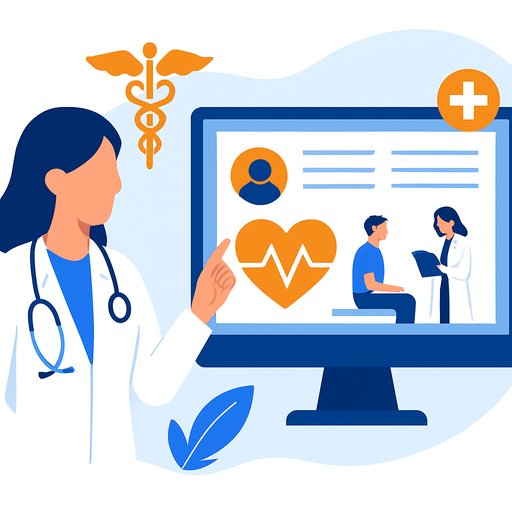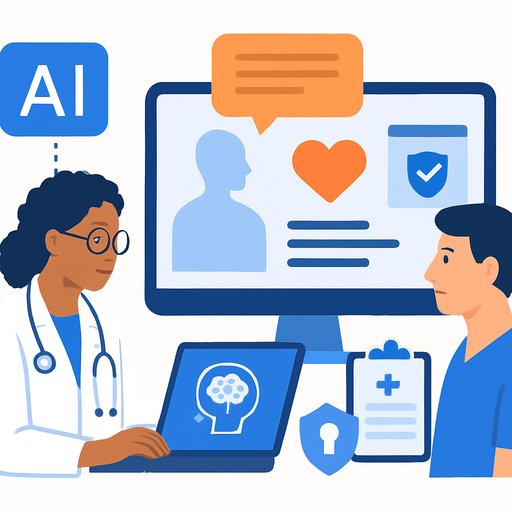NexV Debuts AI-Driven "Mental Health Chair" at MEDICA 2025
NexV announced a new concept mental health solution at MEDICA 2025 in Düsseldorf, signaling its push into the global market. The event drew over 80,000 medical professionals and buyers, with around 5,600 companies from 71 countries showcasing new technologies. MEDICA remains the largest stage for medical devices and health tech validation.
This project is part of the government-backed "Micro DIPS (Super gap 1000)" program, positioning the system as a next-generation platform for stress monitoring and mental well-being support. The focus is clear: measurable biosignals, real-time analysis, and actionable interventions.
How the Technology Works
NexV unveiled the Mental Health Chair, built on AI-biosignal fusion with a multimodal system at its core. It analyzes a user's emotional state and stress index using EEG and HRV measured via remote photoplethysmography (rPPG), supported by an integrated camera and EEG headset.
- Signals captured: EEG for brain activity; HRV via rPPG for autonomic balance
- Real-time analysis: Continuous stress and emotion state estimation
- AI counseling module: Suggests conversation flows and meditation content matched to the user's current state
- User experience: Interactive interface linked to the chair for structured psychological and meditation sessions
For readers new to rPPG, here's a concise overview of the technique and its applications in contactless HRV estimation: Remote PPG.
Why Healthcare Leaders Should Care
- Point-of-care stress screening: Support brief, standardized pre-visit check-ins in primary care or behavioral health.
- Staff well-being rooms: Provide fast, objective stress readouts with guided micro-interventions for clinicians under pressure.
- Occupational health and corporate clinics: Offer measurable sessions that feed into wellness programs and ROI reporting.
- Research settings: Combine EEG and HRV for protocol-based trials on stress and intervention efficacy.
From Hospital to Everyday Use
According to CEO Hyunji Yoon, the company's vision is to move emotional and psychological measurements out of purely clinical environments and into everyday spaces. The chair interfaces with a conversational AI character, estimates emotional state in real-time, and delivers counseling or meditation content aligned with the user's status.
The key promise: make mental health support more accessible by using familiar interactions and objective biosignal inputs. That combination could lower friction for first-time users and improve engagement across settings.
Clinical and Operational Considerations
- Validation: Request data on signal accuracy (EEG quality metrics, HRV agreement vs. reference devices) and outcome measures (e.g., reductions in self-reported stress).
- Regulatory status: Confirm certifications, intended use, and claims in your region (e.g., CE, MDR classification, FDA pathway if planned).
- Integration: Ask about data export formats, APIs, and documentation for connecting to EHRs or research platforms.
- Privacy and security: Clarify video processing for rPPG, on-device vs. cloud inference, storage location, encryption, access controls, and consent flows.
- Infection control: Check headset hygiene protocols, replaceable cushions, cleaning agents compatibility, and turnaround time between sessions.
- Accessibility: Consider fit for different head sizes, hair types, and mobility limitations; evaluate noise and lighting sensitivity for rPPG.
- Training: Determine session facilitation needs, staff training time, and SOPs for consistent use.
Measurement and Outcomes You Can Track
- Session metrics: HRV indices, session duration, adherence, and repeated-use frequency.
- Patient-reported measures: Perceived Stress Scale (PSS), mood ratings, or brief anxiety screens pre/post session.
- Operational: Throughput per chair, no-show rate reduction for wellness visits, utilization by shift/time of day.
Commercialization Timeline
The project, under the Micro DIPS program, runs through the end of 2025. NexV plans to move findings into commercialization and scale into a multimodal healthcare platform that blends hardware, content, and services for domestic and international markets.
Practical Next Steps for Providers and Buyers
- Pilot in a controlled environment (e.g., staff wellness room or a primary care clinic bay) with clear success criteria.
- Compare biosignal readings with existing references to assess signal quality and reliability in your setting.
- Define data governance early, including consent, retention, and sharing rules.
- Plan for change management: training, user onboarding, and session scripting to drive adoption.
Where to Learn More
Explore the event where it launched: MEDICA. If you're building internal AI skills for healthcare projects, you can browse role-based learning paths here: AI courses by job.
Bottom line: NexV's Mental Health Chair blends EEG, rPPG-based HRV, and conversational AI to bring stress monitoring and guided interventions into everyday environments. For healthcare teams, the value will hinge on validation, workflow fit, and measurable outcomes across real users and real clinics.
Your membership also unlocks:




